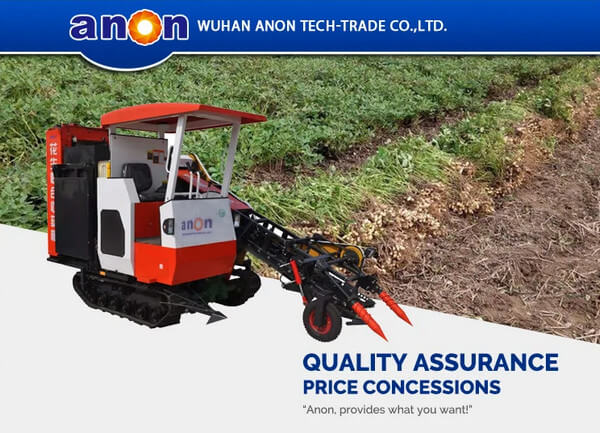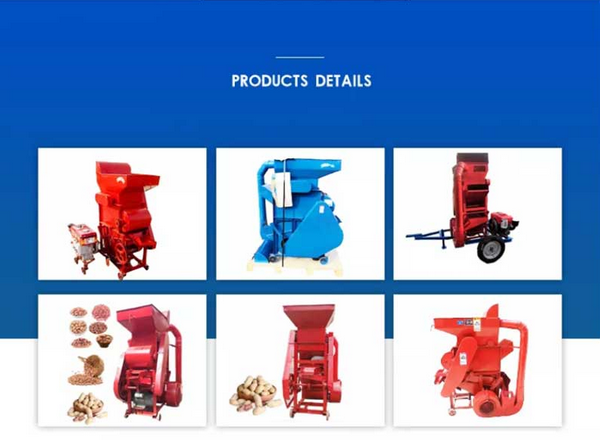Introduction
How many scenes do you know that involve the use of? Do you think it is a great helper on your farm? During the harvest season, the use of harvesters can greatly reduce your workload. It will make the huge and complicated harvest work quick and easy. In this article, you will explore the various uses of the harvester in the field of harvesting. Let’s see what makes them so irreplaceable!
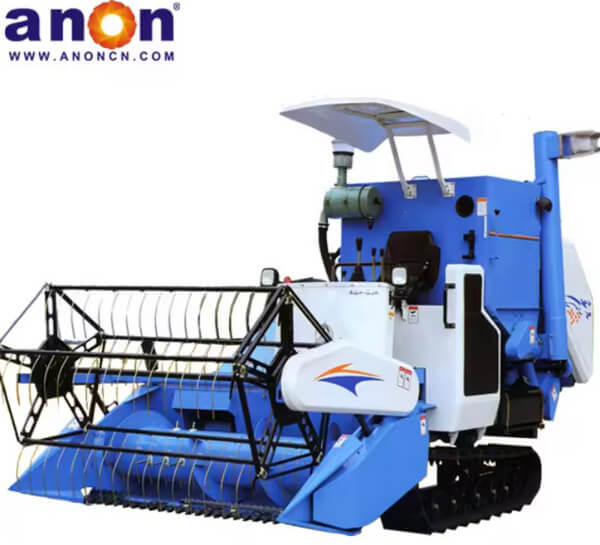
Importance of Harvester Uses in Agriculture
You cannot stress enough the importance of the combine harvester in agriculture. As an important equipment in modern agriculture, the harvester plays a huge role in the production process. It maximizes the efficiency and productivity of receiving goods.
Today, harvesters are able to complete large areas of harvest work in a very short time. Not only does the harvester use make our work more efficient, but it also allows farmers to grow more food. This has played a great role in improving the supply and stability of food.
The development of mechanized machines has also improved agricultural production. As a result, we now have access to sufficient food, and also to high-quality food.
All of this is highly linked with the power of the harvester in this step of crop collection. You can say that modern agriculture is inseparable from the application of harvesters.
Types of Different Harvester Uses
Combine harvesters have a very wide range of uses. Different types of harvesters can harvest corresponding crops. Below, you will see the use of harvesters for the four most common crops.
Grain Harvesters
The grain harvester is an indispensable and important machine in modern agriculture. It is often used to harvest grain crops such as barley and wheat.
The grain harvester has a complete harvesting process. At first, it will harvest the grain quickly and efficiently, delivering it to the machine. The incoming crop is then separated from the grain and straw. After the grain is cleaned, it is sent to containers for storage. After that, you can also do threshing or baling as you need.
Vegetable Harvesters
If you collect all your vegetables one by one, this can take you a lot of time. Thankfully, we now have vegetable harvesters. If we involve the harvester in our work, things will be much easier.
Vegetable harvesting is more common with hand-pushed tools. You just need to push it around the field, and the vegetable harvester will harvest row by row in your walking direction. The structure of the vegetable harvester is also relatively simple. So, if you need to collect all the vegetables while harvesting them, you only need to equip yourself with a few collection boxes. Then, you can meet your requirements.
Forage Harvesters
The forage harvester is a kind of mechanical equipment specially designed for harvesting forage material. It is mainly used for harvesting and crushing all kinds of dry and wet crops after harvesting them. The forage harvester has a wide range of applications. It can harvest a variety of grass, such as wheat stalks, grass, peanut seedlings, and corn stalks.
Post-harvest forage is also used in many ways. It is most common to use harvested and fermented forage on farms. This type of feed is rich in nutrients and can provide energy and protein for livestock. The harvested silage can also be used to produce biomass power generation fuels such as charcoal and straw coal.
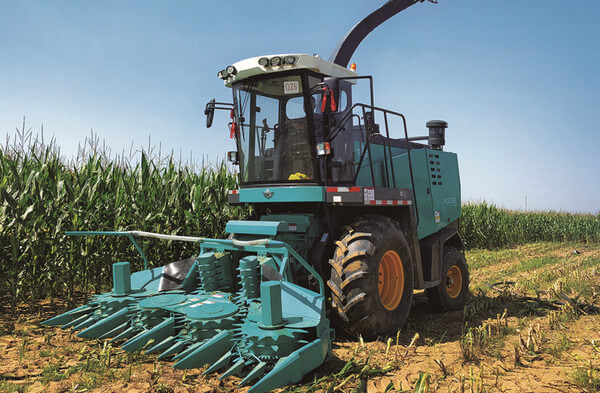
Sugarcane Harvesters
A sugarcane harvester is an agricultural tool specially designed for harvesting sugarcane stalks. Traditionally, harvesting sugar cane involves a lot of manual labor. But in modern agriculture, sugarcane harvesters can cut and collect sugarcane efficiently. This kind of harvester greatly improves labor efficiency and reduces labor costs.
Sugarcane harvesters are also divided into whole stalk harvesters and chopper harvesters. Chopper sugarcane harvesters are often used when sugarcane transport is needed. It’s better to cut it short into several pieces. For sugarcane to be directly transported to the processing plant to make sugar, we often use the whole stalk. Cutting the sugar cane will shed sugar cane juice, resulting in a loss.
Root Crop Harvesters
A root crop harvester is a specialized agricultural machine designed to harvest root crops such as potatoes, sweet potatoes, beets, and carrots. It combines high digging efficiency with low crop damage. The machine digs crops out of the soil while protecting their shape and quality. After harvesting, the crops pass through a vibrating screen and air separator to remove soil and debris. A drum separator then removes smaller soil clumps and leftover leaves. The machine uses a soft conveyor belt to reduce impact during transport. It also uses a hydraulic system to control digging depth, helping prevent breakage and protecting the appearance and market value of the crops.
Cotton Harvester
A cotton harvester is an automated machine designed specifically for harvesting cotton. It uses multiple coordinated parts to complete the process efficiently. First, the front dividers lift and guide the cotton plants into the picking chamber. Inside, spindles with sharp prongs rotate at high speed to pull cotton fibers from the bolls and wrap them around the spindles. As the spindles rotate to the other side, they meet high-speed doffing plates spinning in the opposite direction. These plates remove the cotton from the spindles. The cotton then falls and is lifted by a strong airflow from a powerful fan. It travels through ventilation pipes and enters the storage basket.
When the basket fills up, an internal rotating shaft compresses the cotton into a round bale. The machine either drops the bale onto the field or transfers it directly into a special trailer.
The cotton harvester saves labor, increases efficiency, and reduces waste. It combines multiple functions in one machine, making the harvesting process faster and more effective.
Pepper Harvester
The pepper harvester uses vibration or rotating drums to separate peppers from the plants. The harvested peppers fall onto a conveyor belt equipped with scrapers. As the belt moves upward, it carries the peppers along. During the drop, a strong airflow blows away leaves and light stems mixed with the peppers. After cleaning, the peppers slide down a chute and enter a collection bag below, completing the harvesting process.
The pepper harvester works efficiently and greatly reduces the need for manual labor. It can operate continuously and minimizes human handling, helping preserve the shape and quality of the peppers.
Peanut harvester
The front end of a peanut harvester is usually equipped with a cutter or digger that cuts or lifts the peanut plants from the roots. The machine then uses gripping chains or rollers to pull the plants out while removing large clumps of soil. Next, the plants are carried by a conveyor system into a separating unit that removes the peanuts from the stems. The shelled peanuts fall onto a vibrating screen or sorting system that removes soil and debris.
After this initial cleaning, the peanuts go through a second cleaning stage, usually with a fan that blows away remaining impurities. The cleaned peanuts are then collected in a storage bin or container. The leftover stems and plant material exit from the back of the machine and can be collected as livestock feed.
A peanut harvester effectively separates the peanuts from the plants, reducing crop loss and damage while improving harvest quality. It saves labor and allows for fast, large-scale harvesting.
Functions of a Harvester
Use of the Harvester in Reaping
One of the main functions of the harvester is to help us harvest crops, such as wheat, barley, corn, and so on. These harvesting machines have special cutting tools and collection devices. This allows them to harvest ripe crops more quickly and efficiently. With this machine for harvesting, the use of manpower will be greatly reduced. This will help you harvest large crops faster, allowing your harvest to be collected faster.
Use of the Harvester in Threshing
When you harvest your crops, what you want is definitely the most useful part. The combined harvester can not only cut down the crop but also help us to separate the unwanted things from your crop. Like getting rid of all the straw or some other shell, this is the process called threshing.
But for different crops, the harvester threshed the grain in different ways. For example, the wheat harvester is used to thresh and get the seeds inside. The cotton harvester is used to remove the cotton and put it inside. The sugarcane harvester is used to remove the sugarcane leaves attached to the surface.
The threshing system is a special part of the harvester’s use. It can effectively separate the crop from the parts we don’t want. This ensures that our crops are threshed efficiently. Then, it can provide good materials for later processing and storage.
Use of the Harvester in Winnowing
After threshing, the harvester also carries out a winnowing function. This is the process of separating the grain from other light impurities, like dirt or leaves.
It basically uses the power of strong winds to separate grains from straw or dust. This part can improve the purity and quality of the grain. Also, it will provide a better and cleaner raw material for later processing and storage.
Harvester Use in Collecting
The cleaned grain is transported via a conveyor belt into a grain bin or directly to a transport vehicle. Therefore, the harvester also has the function of collecting grain. After a series of operations, the ultimate goal is to obtain clean grain for subsequent processing.
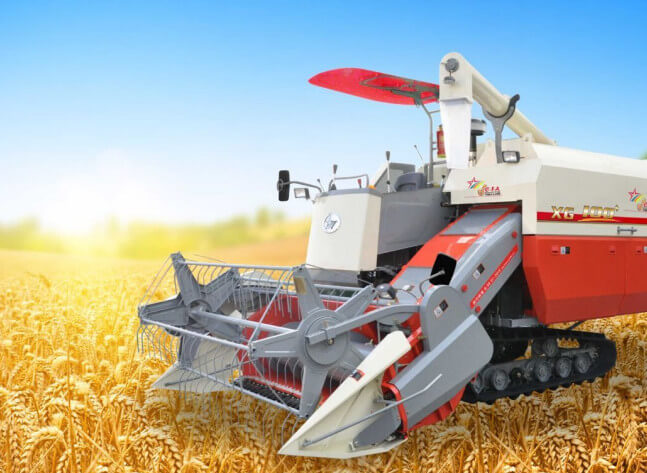
Advantages of Harvester Uses
The harvester offers numerous advantages in modern agriculture. You will learn the three most important aspects in the following paragraphs.
Increased Efficiency and Productivity
There is no doubt that the harvester uses have greatly improved work efficiency and productivity. For example, when harvesting grain, you might need a lot of manpower in the traditional way. However, traditional manual harvesting is time-consuming and inefficient. We believe that for who has the need to buy a harvester, will definitely choose a more efficient tool to work. Harvester is the best choice, not only fast, but also highly efficient.
Reduction in Manual Labor
Moreover, the use of harvesters can also help you reduce a lot of labor costs. Although in the early stage, the purchase and maintenance of the harvester will cost you a lot of money. But in the long run, buying a harvester means saving a lot of labor. The amount of time you spend on crop harvesting is also greatly reduced. If you take it all out and do the math, you’ll find that buying a harvester is still much more cost-effective.
Minimization of Crop Losses
Also, the use of harvesters has a great role in protecting the quality of crops. There are two problems with traditional manual harvesting due to its long taking. The first issue is that harvesting grains early requires storing them longer, which harms the freshness and quality of the crops. The second issue is the long harvester cycle.
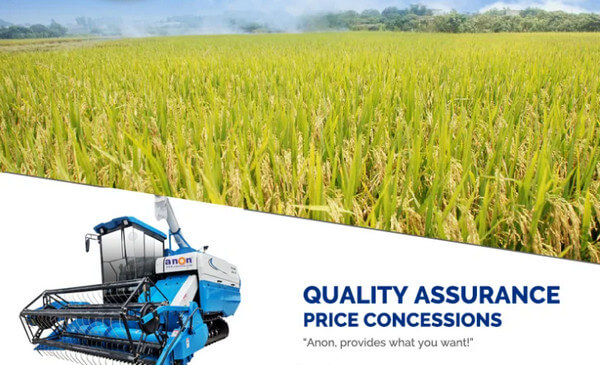
Choosing the Right Harvester for Your Needs
Crop type
When choosing a harvester, you should first consider the type of crop you are growing, such as wheat, rice, corn, or sugarcane, as this determines the type and features of the machine you need. Different crops require different harvesting equipment; for example, grains typically need a combine harvester, while root and stem crops require specialized machines.
Land size and terrain
Next, consider the size and terrain of your farmland. For large, continuous fields, medium to large harvesters with wide working widths and high efficiency are ideal. For smaller or scattered plots, compact harvesters with high maneuverability and a small turning radius are more suitable. If your land has slopes or uneven terrain, choose a model with a stable chassis and strong adaptability to avoid slipping or tipping, ensuring safe operation.
Harvester’s size and capacity
Finally, the size and working capacity of the harvester should match the horsepower of your tractor, the conditions of your field, and your actual production needs. If the machine is too large, it may consume more fuel and be difficult to maneuver in tight field spaces. On the other hand, if the machine is too small, it may not meet the demand for efficient harvesting, which could affect your overall productivity.
Conclusion
In the end, the use of harvesters does bring convenience to agricultural development. And different types of harvesters have different uses. And their main important components are three basic parts.
After reading this article, you must have a clearer view of the use of harvesters.
Also, our website provides more agricultural information. If you are interested in this field, please click on ANON to learn more.
FAQ
What is the average cost of a combine?
New harvesters can range anywhere from $100,000 to $500,000. A used combine costs less, but you’ll need to ensure you get the same top quality. You can generally expect to pay around $100,000 to $150,000 for a used combine, but the exact price will depend on the unit’s size, make, model, and age.
What is the lifespan of the harvester?
The lifespan of harvesting ants varies by species, but on average, the lifespan of worker ants is 1-2 years, depending on their size. The larger the worker ant, the longer its lifespan, while the lifespan of queen ants is 27 years.
How fast can the harvester run?
You will see that the combine harvester typically travels at a speed of 6.2 to 12.4 miles per hour (10 to 20 kilometers per hour) during the harvesting process. The speed varies depending on the crop, field, and machine. Choosing the appropriate speed can help you harvest better and maintain the good condition of crops.



